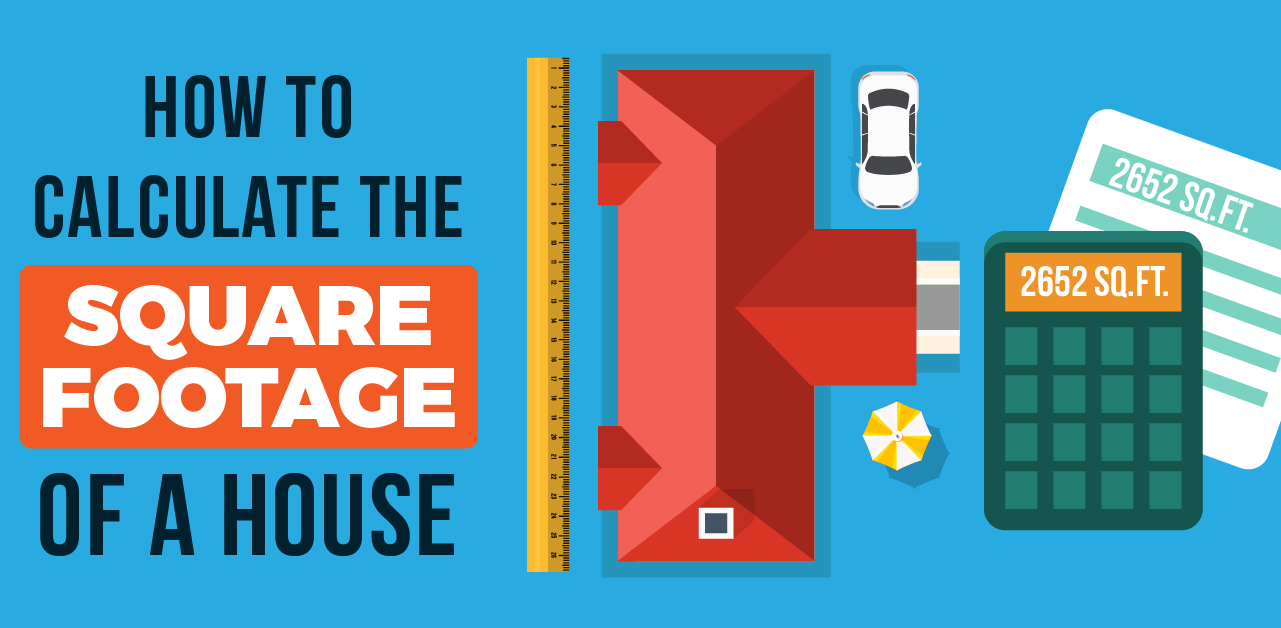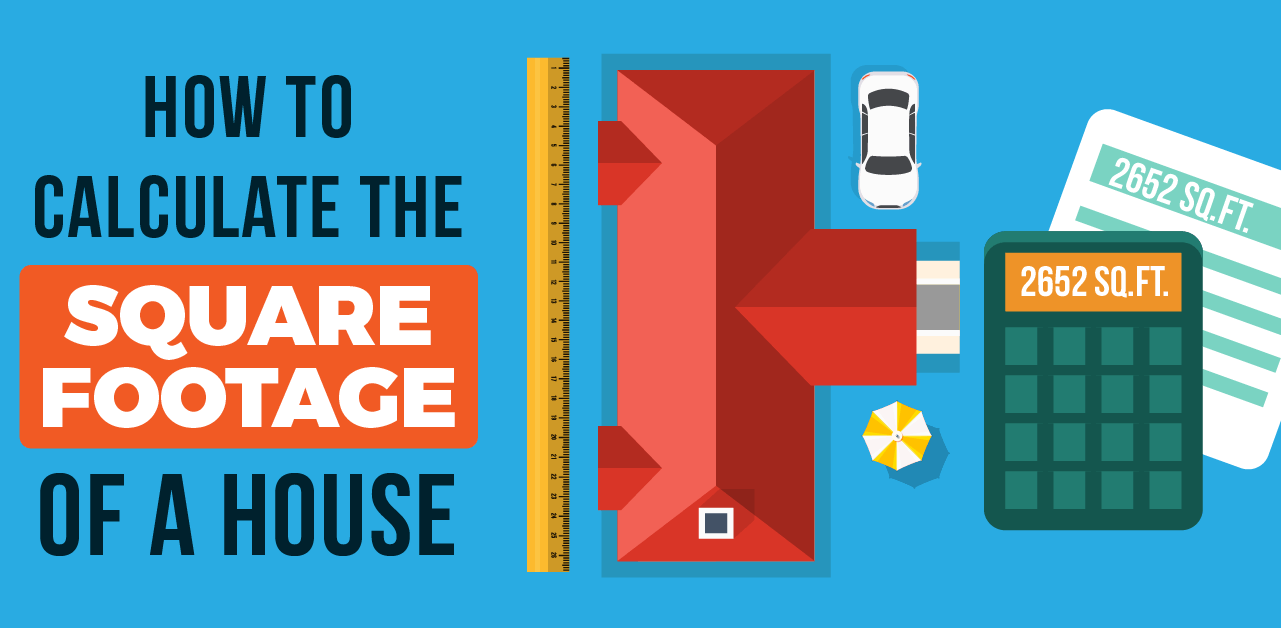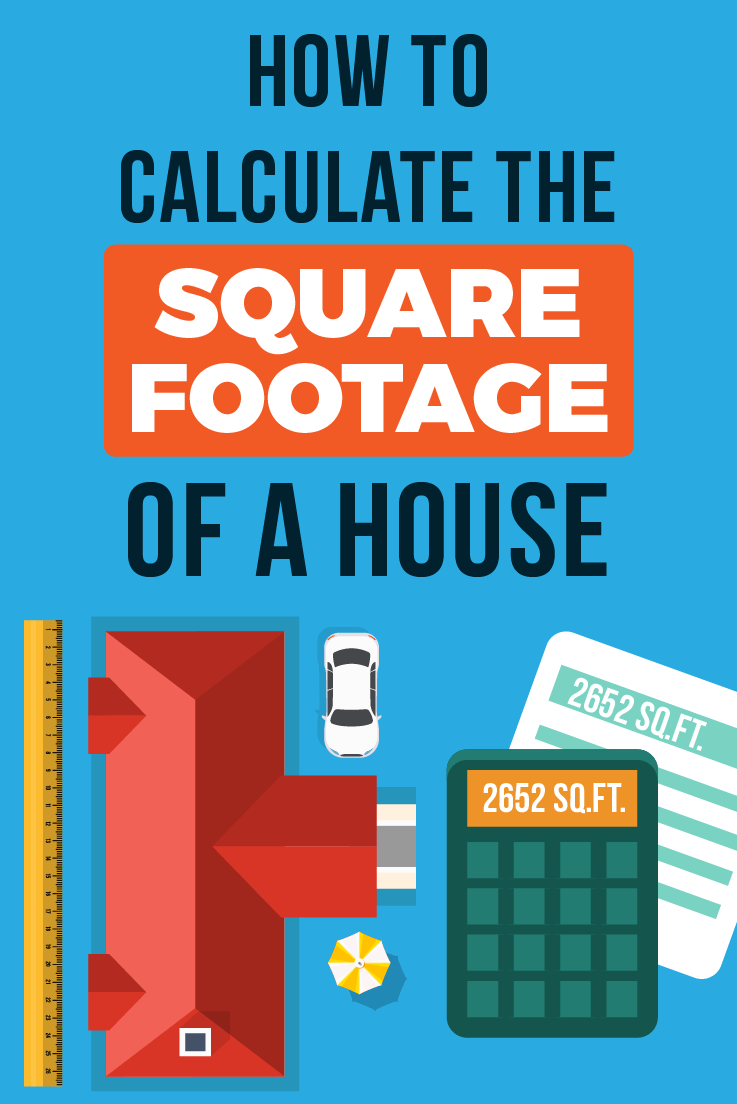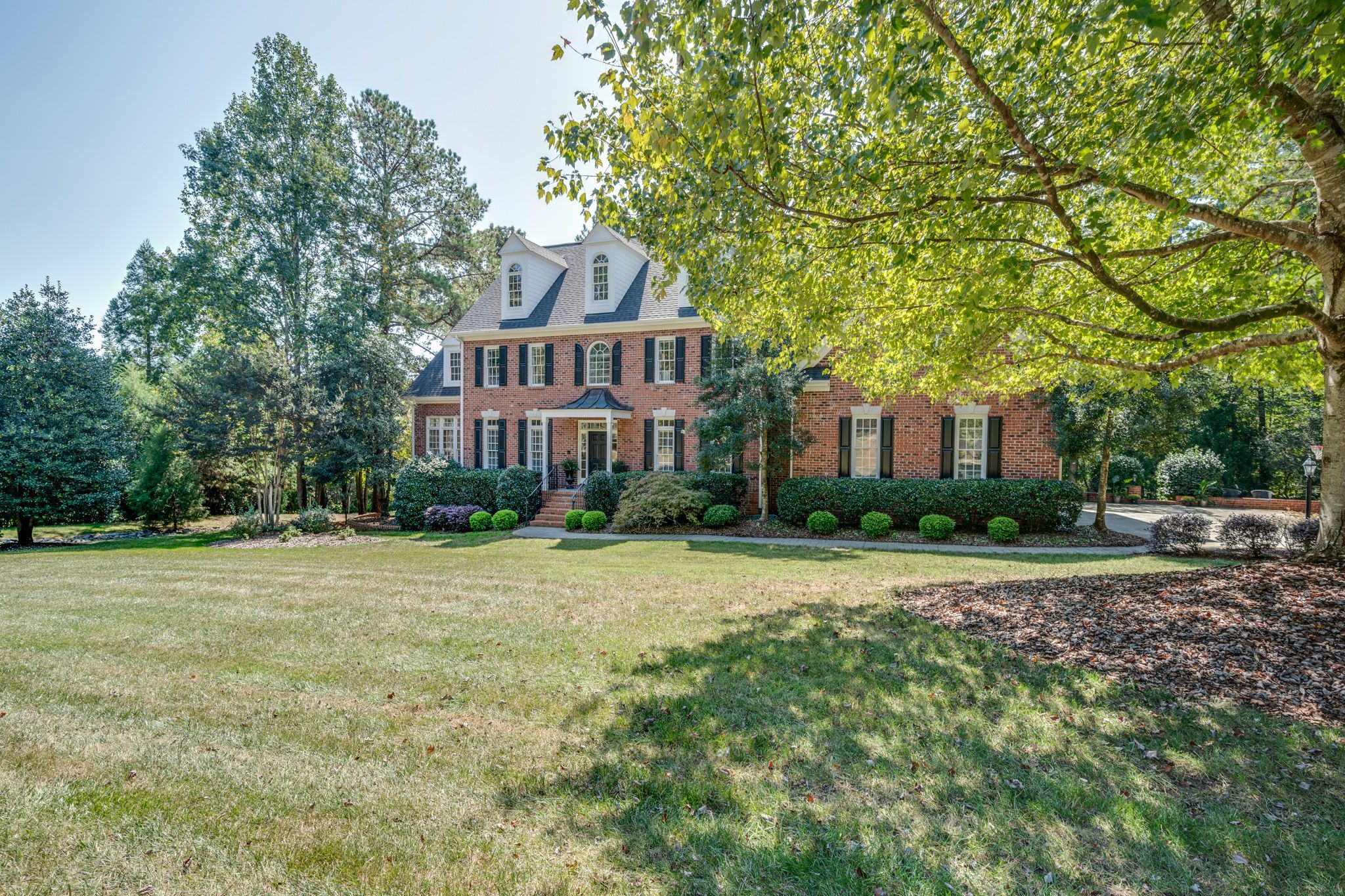7 Tips: How to Measure Square Footage of a House

Chapters
- How to Measure The Square Footage of a House
- What makes measuring the square footage of a house important?
- How to Calculate a Home's Square Footage:
- How to measure square feet of a room with closets:
- What is the American National Standards Institute (ANSI) method for measuring square footage?
- Should the square footage of a house be measured inside or outside?
- Which tools should I use to calculate the square footage of a house?
- How does an appraiser determine the square footage of a house?
- How to calculate the square footage of a house roof:
- What is considered a home's square footage?
- What is not included in a home's square footage?
- Should square footage be a critical aspect of my buying decision?
How to Measure The Square Footage of a House
Are you wondering how to calculate and measure square feet to figure out the square footage of a house? We have you covered in the article below with a guide on determining the total square footage of a home!

When determining how to measure the square footage of a house, it may come as a surprise that there is not a national standard for measuring residential property. For that unique reason, everyone tends to measure square footage differently.
Because established measurement standards are not in place, it is all too easy to measure square footage incorrectly, which has happened countless times. This is what makes measuring the square footage of a house tricky in some ways. Although a standard for measuring square footage isn’t in place, it is essential to be as precise as possible when calculating a home’s square feet, as that number can impact home values.
Square footage guidelines also tend to vary from state to state. This paragraph below shows why location is so important in real estate and how buying a home with miscalculated square footage can be an expensive mistake.
California, Texas, and Florida all have different criteria and guidelines for how homes should measure square footage when marketing homes for sale. Depending on where you live, you may be required to disclose accurate square footage information, whereas other states are not required to do so. Somewhere like San Francisco or New York City, the price per square footage is so high (exceeding $1,000 per square foot) that a 200-square-foot miscalculation could result in a $200,000 swing.
When you see homes for sale online in cities like Raleigh and Charlotte, the square footage of a home must be marketed and disclosed as accurately as possible. There are other cities where a range is acceptable since determining square footage can be tough to calculate precisely since everyone measures a bit differently.
What makes measuring the square footage of a house important?
When buying a home you love, it may not matter if the house is 2,000 square feet or 2,500 square feet. After all, buying a home is about far more than just square footage; the home’s upgrades and amenities, outdoor space, and neighborhood may also be important factors to you.
Knowing the square footage of a home is critical for future listing prices and improvements. If you prepare to sell the house several years after purchasing it, you may list it for a price that is in line with homes that have sold for 2,500 square feet.
When selling a home in Raleigh it's imperative that the square footage of the house be measured correctly, or the sellers and Listing Agent will be on the hook. However, if a buyer puts in an offer and finds out during the transaction process that the home is 500 square feet less than what they were told, they may ask for a price reduction or to walk away from the deal altogether.
While this is an extreme scenario, situations such as these have happened in the past – especially in a strong buyer's market when buyers have a wealth of properties on the market to choose from.
How to Calculate a Home's Square Footage:
Here's the good news: calculating square footage is relatively easy. To calculate the square feet of a room that is rectangular or square, simply multiply the length of the room by the width. So, if a room is 10 feet long and 12 feet wide, merely multiply 10 by 12 to get 120 square feet. If the room has alcoves, measure those separately and add them to the overall square footage of the room. If the 120 square foot room has an alcove measuring 3 x 3, the room will be 129 square feet.
To measure the total square feet of a house, complete this process in every room of the house. After measuring each room, add up the total. For example, if there are three rooms in your house measuring 120 square feet, 80 square feet, and 230 square feet, the total square footage of your home will be 430 square feet.
How to measure square feet of a room with closets:
To measure a room with closets, simply measure each closet separately by multiplying length by width. For example, if your closet measures 3 feet by 8 feet, your closet is 24 square feet in total. After measuring each closet, add the total square footage in each closet, plus the square footage of the room where the closets are.
So, it would go as follows:
Room: Length x Width = A
Closet 1: Length x Width = B
Closet 2: Length x Width = C
Add A, B, and C together, and you will have the room's total square footage.
What is the American National Standards Institute (ANSI) method for measuring square footage?
While a national standard for measuring square footage is not currently in place, an organization called the American National Standards Institute (ANSI) provides guidelines on calculating a house's square feet, which many real estate agents and homeowners follow. The ANSI method encourages calculating the home’s exterior square footage, but the wall width is not typically subtracted to account for actual living space. Many condominiums do not have square footage guidelines in place and do not always follow ANSI guidelines.
Should the square footage of a house be measured inside or outside?
Per the ANSI method, square footage can be measured outside the home, but that will not provide the actual livable area, as measuring from the home’s exterior will include wall space. Measuring from the inside of the home excludes the area between the wall and the home’s exterior, providing an accurate number as to the actual livable area.
Which tools should I use to calculate the square footage of a house?
When calculating square footage, real estate agents typically use a laser distance measurer, an electronic tool that is easier and less cumbersome to use than a measuring tape. To use the laser distance measurer, place the device on one wall and aim it at the wall directly across from it. The device will then display the square footage on the screen.
If you don’t have a laser distance measurer, you can also calculate square footage with the following:
-
A tape measure
-
Calculator
-
Notepad and pen/pencil
Other ways to check the square footage of a house:
While less common, there are certain circumstances where buyers or renters cannot tour the property in person and may buy or rent a home without visiting it first. If that is the case, there are other ways of checking the home's square footage. Even if you have physically seen the house and completed measurements on your own, double-checking square footage measurements are always a good idea to ensure your numbers are correct.
-
Check the property records held by your city or county.
Some cities and counties have property records available online. These records provide detailed information regarding the property's former ownership, taxes, square footage, and more. Suppose you are preparing to buy a property and are working with a real estate agent. In that case, your agent may be able to pull additional information on the property depending on the programs the agent has access to. For example, some agents pay for a tax record search service that provides information regarding the roof type, room count, square footage, and additional details.
The downside is: if you or your real estate agent obtain that information and the square footage is different than what you have, the tax assessor may have been wrong when the measurements were put in the record, or you may have missed or added some square footage without realizing it. The property may have also had improvements completed without a permit. Permit information can be accessed by contacting the city planning department if that is possible.
-
Have the house measured by an appraiser
If you are preparing to sell your house and are unclear about your home's square footage, it may be worthwhile to hire an appraiser to professionally measure your home. In addition to providing measurement information, the appraiser will also provide your home's value – giving you peace of mind when you list your property.
Hiring an appraiser is typically only helpful if you sell your home independently. If you are working with a real estate agent, your agent will most likely be skilled at taking accurate measurements – as they have probably measured countless homes throughout their career. They should also provide an accurate list price based on their real estate market knowledge.
How does an appraiser determine the square footage of a house?
When an appraiser calculates the square footage of a home, it will only measure interior spaces that are heated and cooled. This includes bedrooms (and closets), bathrooms, hallways, a kitchen, living areas, enclosed patios, and finished attics.
Unfinished areas, screened or open patios, vaulted rooms, and airspaces are not factored into a home's square footage. Additionally, any space that requires passing through an unfinished area – such as a pool house, storage area, or guest house will not be factored into the home's square footage.
Does the garage count in the square footage of a house?
The garage does not count towards the square footage of a house, as that is considered an unfinished space. A garage will only count towards the square footage of a home is if it has been legally converted into a living space.
How to calculate the square footage of a house roof:
To calculate the square footage of a roof, measure the length and width of each plane on the top (including dormers). The plane of the roof is one side of the roof that has four separate edges. A dormer is a structure that sticks out of the roof and typically contains windows.
After measuring the roof's plane and dormers, multiply the length times the width. Go onto the other side of the roof, measure the other side of the roof's plane, and include any dormers on that side. Multiply the length times the width on that side of the roof. Take the measurements from both sides of the roof and combine those numbers to get the total square footage of the home’s roof.
How to calculate square footage of a 2-story house:
To calculate the square footage of a 2-story house, simply measure every room in the house. Exclude any unfinished areas, such as the garage or an unfinished basement. After measuring each room individually – including the closets in each room – combine the measurements from all rooms. The total number is the square footage of the 2-story home. While the thought of measuring a 2-story home may seem daunting, it is best to think of the house as a collection of individual boxes. After compiling the measurements of each ‘box,’ you will have your total square footage calculation for the entire home.
How many square feet is a 10x10 room?
To find the square footage of a room measuring 10 feet by 10 feet, simply multiply 10 by 10, which is 100. This process should be used for a room any size; simply measure the length times width to find the room's square footage.
Square footage calculators:
In addition to helping determine the size of your house, the square footage calculators provided below are also great for measuring an area to determine how much flooring, carpet, or tiling you may need when beginning renovations.
This calculator finds square footage, square meters, square yardage, or acres for a home or building. This calculator also has a feature where you can enter the price per square foot, the price per square meter, or the price per square yard to calculate the approximate cost of materials.
The Square Footage Calculator will estimate the square footage of an area, even in complex spaces.
The Calculator Site works similarly to the other calculator options included above and can be used to calculate the square footage of an area in square feet, square meters, or square yards.
What is considered a home's square footage?
Only finished spaces are included in a home's square footage. Finished spaces include any area that can be lived in throughout the year and typically has the following attributes:
-
Ceiling (must have a floor-to-ceiling height of 7 feet or more)
-
Wallcovering
-
Flooring
-
Heating and cooling
The rooms that are typically included in a home's square footage, if they are finished, include:
-
Living room
-
Family room
-
Kitchen
-
Dining room
-
Bathrooms
-
Bedrooms
-
Finished basement (if applicable)
-
Porch with heating and cooling system (if applicable)
While renovating unfinished spaces is not always necessary, they do add to your home's square footage and, depending on the situation, may increase your home's property value. If you are considering selling your home, discuss which areas of your house may benefit from being finished with your real estate agent.
What is not included in a home's square footage?
All unfinished areas in the home are not included in the home's square footage. These typically include the following:
-
Garage
-
Attic
-
Rooms with a sloping ceiling
-
Unfinished basement
-
Separate storage area
-
Pool House
-
Guesthouse
-
Detached in-law quarters
Should square footage be a critical aspect of my buying decision?
When considering homes to buy, countless other factors come into play besides square footage. While square footage should not be entirely overlooked, it is essential to consider your overall emotional response to the home. If you are comfortable with the layout, design, and floorplan, having the square footage slightly lower than what you anticipated should not be a total dealbreaker.
Factor in the home's neighborhood, the number of rooms, and the home's upgrades and amenities. If the home checks every box besides square footage but has an open layout that you can make open and airy, it may be worth moving forward. That said, research what homes in the area are selling for at that size, as you will want a good idea of the home's resale value should you choose to sell it down the line.
Key takeaways
While knowing your property's square footage is extremely important, the downside to calculating square footage is that it is subjective. Some real estate agents and homeowners may use ANSI guidelines when calculating single-family homes, but everyone does not operate this method. It's important to understand that if you misrepresent the actual square footage, you will be held liable and likely to be sued for damages. This is why we hire out all of our square footage measurements to the professionals, to protect our sellers.
Additionally, square footage guidelines vary from state to state. Some states may require that square footage is included in a property’s listing description, whereas other states may not require that that information be disclosed.
Check out our related article on how to find your property lines.


Ryan Fitzgerald
Hi there! Nice to 'meet' you and thanks for visiting our Raleigh Real Estate Blog! My name is Ryan Fitzgerald, and I'm a REALTOR® in Raleigh-Durham, NC, the owner of Raleigh Realty. I work alongside some of the best Realtors in Raleigh. You can find more of my real estate content on Forbes, Wall Street Journal, U.S. News and more. Realtor Magazine named me a top 30 under 30 Realtor in the country (it was a long time ago haha). Any way, that's enough about me. I'd love to learn more about you if you'd like to connect with me on Facebook and Instagram or connect with our team at Raleigh Realty. Looking forward to connecting!

